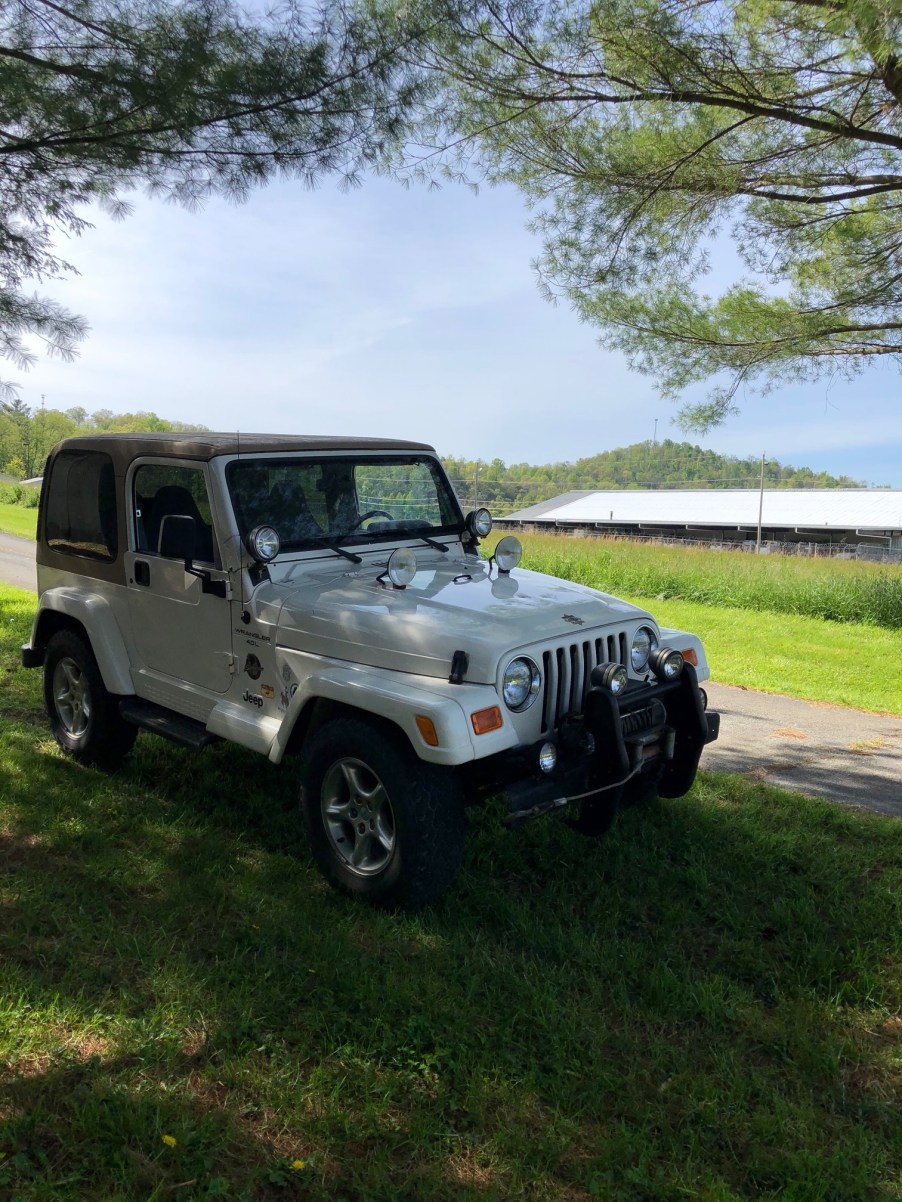
Save $45,000 by Buying the Jeep Wrangler’s Best Off-Roading Trim
The Jeep Wrangler Rubicon 392 Hemi is a dream come true for many Jeep enthusiasts. For years, Jeepers wanted a V8. Well, they got it. Now that they do, it’s kind of like a dog chasing its tail; they don’t know what to do with it once they get it. Ok, that’s a little harsh. The V8 Wrangler is super cool, but that doesn’t make a great off-road rig. Before I get the hate mail, let me explain how you can save nearly $45k and still get the Jeep Wrangler’s best off-roading trim.

What is the Jeep Wrangler’s best off-road trim?
Jeep might suggest, and the average consumer might believe that the biggest, baddest model with the most power and the highest clearance will get you further out in it than the smaller, cheaper models.
For Jeep marketing peeps, this is a no-brainer. Of course, the most expensive and exclusive model will fill the hole in your automotive needs (heart). This isn’t a critique; it’s just business. It’s the people who know better and choose otherwise.
If you believe the biggest and baddest Jeep Wrangler model will get you further into the woods, then logic would suggest that the top-trim Jeep Wrangler Rubicon 391 Hemi is the Jeep Wrangler’s best off-roading trim. The spec sheet for this model is longer than a Rite Aid receipt. MotorTrend has plenty to say about all that engine, tire, and suspension. Although these accessories, features, and fancy off-road gear do make it technically more capable, they might also be holding it back. Can an $80,000+ Jeep Wrangler be the best for off-roading?
I don’t think that’s true. In fact, I believe that the opposite of that thinking is true; the cheapest Wrangler with the bare minimum will serve off-roading needs better.
The two-door Jeep Wrangler Sport is the best trim for off-roading
The 2022 Jeep Wrangler starts at $29,999. Therein lies its secret off-road power. Now, I’m not saying because it’s cheaper; it can literally perform better off-road. The base Jeep Wrangler Sport has all the necessary ingredients for a strong off-roader. It has solid axles, a proven 4×4 driveline, a strong 285-hp 3.6-liter V6, and a short wheelbase (two-door). Even without the fancy suspension and the upgraded tires, it still clears 9.7-inches on the trail.
So, if you take the two models and compare specs side-by-side, the Rubicon V8 would smoke it literally and figuratively. However, there is an aspect of off-roading that is harder to quantify. For every monster, tricked-out Wrangler rolling around on the roads, how many have ever seen dirt, mud, boulders, clay, or anything else made by the forming of the planet instead of some dude named Steve on a road work crew?
Obviously, I can’t accurately answer that, but in our hearts, we probably know something close enough to the truth to feel confident. To be clear, that number certainly isn’t zero. Some people who build six-figure rigs actually wheel those bad boys, but anecdotally, the ones tearing up the trails are the cheaper version.
Do people actually take Jeep Wranglers off-road?

Mark Allen, head of design at Jeep, told ABC News in September 2019 that 10% to 15% of customers take their Wranglers off-road. This number varies year to year, but even if this number is way off and the truth is more like double, then that still means only 30 percent go off-road, at best. Now, imagine how many of them are taking $80k+ rigs on real off-roading trails. And, I don’t mean fire roads.
I owned a Wrangler for 11 years. I put over 100k miles on it in that time. My 2000 Jeep Wrangler Saraha came to me used for $10k with 70,000 miles on it. It was nice, but not too nice. Because it had metal floors with removable plugs, water resistant seats, and doors that came off with a couple of bolts, it felt more like a toy than a real car, and I treated it as such despite it being my daily driver.
Throughout my ownership of my Jeep, I can’t count how many times I passed other newer, fancier Jeeps on the trail who had called it quits despite having all the bells and whistles. Nearly every time I’d pull up to check on them, thinking they needed help. In almost every instance, these Jeeps stopped because they were “too nervous to get stuck” or they “didn’t want to pinstripe their new Rubicon.”
The best off-roader is a cheap off-roader
Occasionally, very occasionally, I’d find one of the big boys crushing the trail as far back as my bone stock (other than lights and winch) TJ would take me. Because my rig was so cheap and plain, if I got it stuck and damaged something underneath, pin striped the sides on narrow paths or trails, or got hit by a falling tree we had to cut to make the trail wide enough, it didn’t really matter. The Wrangler was tough enough to take all of it. I just had to be tough enough to let it get banged up.
I’m not hating on the folks who don’t want to take an expensive rig into the woods; I wouldn’t do it either. But that is exactly why they aren’t as well-suited for the trails as the cheaper versions are, despite their spec sheets.
The fastest boat in the world ain’t special if it don’t ever get in the water.



